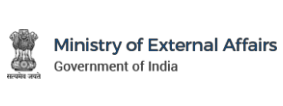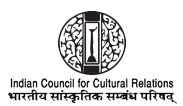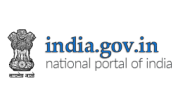Joint Statement between the Ministry of Health and family welfare of the Republic of India and the the department of health and human services of the United States of America on Collaboration on prevention of sexually transmitted diseases and HIV/AIDS
Washington, DC
June 29, 2006
In 2000, Indian Minister of Health and Family Welfare and the Secretary of the U.S. Department of Health and Human Services (HHS) signed a Joint Statement on Prevention of Sexually Transmitted Infections and HIV/AIDS to cover an initial five-year period. The success of the various programs under the umbrella of the Joint Statement demonstrates the value of this cooperation. During the five-year period, the Participants undertook a wide range of prevention research efforts for HIV/AIDS and sexually transmitted diseases (STDs), including behavioral-prevention strategies, epidemiological and operational research on HIV/AIDS and STDs, and intervention strategies for the prevention of HIV/AIDS among injecting-drug abusers, in collaboration with the HHS National Institutes of Health (NIH), and the HHS Centers for Disease Control and Prevention (CDC).
Recognizing the pandemic of human immunodeficiency virus infection and acquired immunodeficiency syndrome (HIV/AIDS) and its effect in the world, the Department of Health and Human Services of the United States of America, and the Ministry of Health and Family Welfare of the Republic of India, hereafter referred to as "the Participants," intend to renew cooperation in the field of HIV/AIDS, as outlined below:
Part One
The Participants intend to promote and develop cooperation in the fields of HIV/AIDS and STD prevention, research, treatment and care, infrastructure development, training, and capacity-building on the basis of reciprocity and mutual benefit. The following identifies the principal Government Departments and agencies on both sides:
Government of India Implementing Ministries and Agencies:
Indian Council of Medical Research (nodal agency);
National AIDS Control Organization;
Ministry of Health and Family Welfare; and
Department of Biotechnology.
U.S. Government Implementing Departments and Agencies;
U.S. Department of Health and Human Services;
HHS National Institutes of Health (lead agency); and
HHS Centers for Disease Control and Prevention.
In addition to the Government Departments and agencies identified above, there could be other participants in the program. These participants include individuals and institutions in the public, private, and academic sectors, State and local Governments in both countries, and other entities, as identified by the Participants.
Part Two
The main areas of cooperation are likely to be, but might not be limited to, the following:
a. Developing innovative intervention strategies for the prevention and treatment of HIV/AIDS;
b. Supporting the Indian Ministry of Health and Family Welfare for the development, evaluation,
and expansion of interventions to reduce the burden of tuberculosis in HIV infected persons;
c. Researching HIV/AIDS vaccines, microbicides, diagnostic kits, and new therapeutics;
d. Developing new treatment methodologies for people living with AIDS (PLWA), such as
psychological and social support for PLWA and their families;
e. Developing culturally sensitive and appropriate, confidential approaches to voluntary
counseling and testing, especially for high-risk groups and other vulnerable groups in the
general population;
f. Developing effective methods and strategies for collecting reliable and valid surveillance data,
ensuring the quality control of data and data analysis, the use of data for effective
decision-making and developing systematic monitoring and evaluation;
g. Developing new strategies for enhancing blood safety and reducing HIV transmission in
health-care settings;
h. Building capacity for HIV/AIDS health-care professionals and others in the care and treatment of PLWA;
i. Developing programs to strengthen capacity and infrastructure in the areas of prevention, care,
and treatment for HIV at the national and State levels; and -
j. Developing new programmatic strategies to encourage effective antenatal screening and prevention of mother-to-child transmission of HIV
Part Three
Cooperation between the two countries may include, but might not be limited to, the following:
a. Increased collaboration among scientists in both countries to conduct research and research training related to HIV/AIDS and other STDs, including basic scientific, clinical, and operational studies;
b. Information and scientific exchanges, and the sharing of experiences;
c. Attendance at professional and scientific meetings by specialists from both countries;
d. Direct links between appropriate institutions of both countries;
e. Increased bilateral cooperation on HIV/AIDS and STD prevention, care, and research at the
global level;
f. Establishing a Joint Working Group (JWG) to develop strategic plans for collaboration and
facilitate the expedited review and clearances of funded bilateral projects;
g. Establishing a state-of-the-art, non-human-primate breeding facility in India for conducting
research on microbicides, vaccines, and therapeutics;
h. Establishing Centers of Excellence in research, training, and public health, which should foster
collaboration in basic, applied, and epidemiologic investigations.
Part Four
The Indo-U.S. JWG should meet at least once a year. The JWG should consist of representatives from each of the Government Departments and agencies, and other individuals as deemed necessary and appropriate. Each side should designate an individual to Co-Chair the JWQ and communicate the names of the Co-Chairs in advance of each meeting. The JWG should do the following:
a. Review program plans and recommend new areas of cooperation, based on recommendations from
technical workshops and collaborating scientists;
b. Recommend measures to both Governments to ensure the program operates smoothly; and
c. Address issues that require joint resolution that Participants cannot address effectively outside of the JWG
Part Five
The Participants should undertake all activities pursuant to this understanding in accordance with the laws and regulations of the United States of America and the Republic of India, subject to the availability of personnel, resources, and appropriated funds. The Participants should develop steps for implementing this understanding through mutual consultations after the signing of this Joint Statement.
Part Six
Both Governments acknowledge the importance of the protection of human subjects in any medical program. In recognition of this, both the Republic of India and the United States of America have adopted laws and regulations on the protection of human subjects and agree to follow the same.
Part Seven
The Participants recognize the work carried out under this Joint Statement could produce patentable results, and lead to the publication of scientific findings. The provisions of the Agreement on Science and Technology Cooperation between the Government of the United States of America and the Government of the Republic of India, signed on October 17, 2005, should govern the allocation of such intellectual property, copyright, and patent rights.
The Participants encourage scientists on both sides to publish, both jointly and as individuals, their findings. In any publication specifically related to work undertaken in areas covered by this Joint Statement, Participants should make an appropriate reference to the Joint Statement.
Part Eight
The Participants recognize work under this Joint Statement can involve numerous exchanges of administrative and scientific personnel throughout each year. The Participants should seek the necessary clearances for personnel involved in such exchanges (exit permission by the sending country and visa issuance by the receiving country) on a priority basis, subject to their respective laws and regulations.
Part Nine
This Joint Statement is effective on the date of signature, and should remain effective for five years, after which the Participants may renew it by written concurrence.
In witness whereof the undersigned, being duly authorized by their respective Governments, have signed this Joint Statement.
Signed on the 29th day of June 2006, in Washington, D.C., with two originals in the English language.
FOR THE FOR THE
MINISTRY OF HEALTH AND FAMILY WELFARE THE DEPARTMENT OF HEALTH
OF REPUBLIC OF INDIA AND HUMAN SERVICES OF THE
UNITED STATES OF AMERICA







